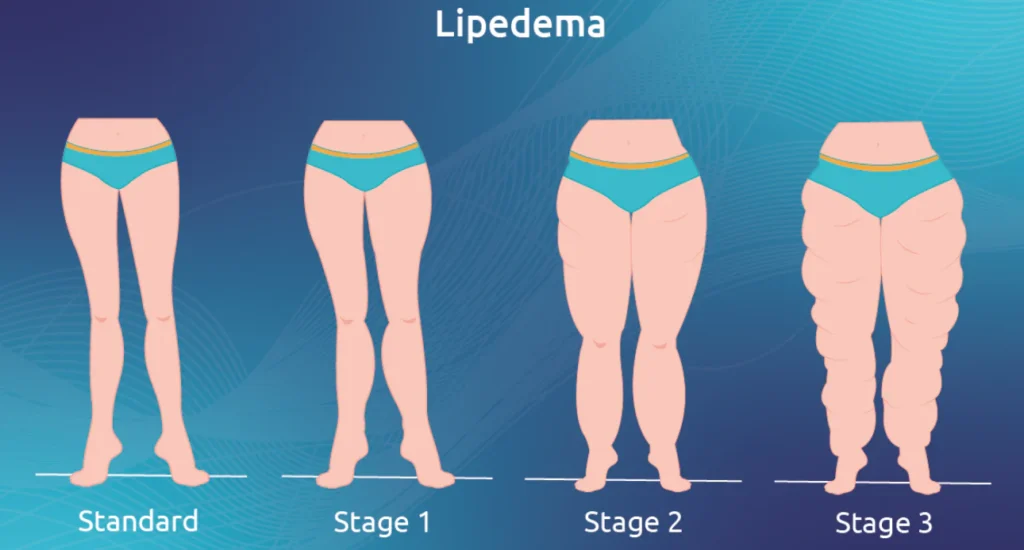H. Hartplein 33 A
5462EB Veghel NL
5462EB Veghel NL
Monday – Saturday – 8:00 – 18:00
Sunday – 8:00 – 14:00
Sunday – 8:00 – 14:00
How does lipedema occur? Lipedema is a condition characterized by an abnormal accumulation of fatty tissue, which occurs mainly in women. This condition usually manifests as symmetrical swelling in the legs and hips. Lipedema can develop independently of a person’s body weight and can be painful, negatively affecting quality of life.

Understanding how lipedema develops is crucial to understanding the reasons behind this condition. Lipedema results from the abnormal enlargement and accumulation of fat cells in the body. This growth of fat cells is usually triggered by hormones. Therefore, lipedema often occurs during periods of hormonal changes, such as puberty, pregnancy or the use of birth control pills. Combined with weakened connective tissue and increased vascular permeability, these factors cause fat cells to grow more than normal. Lipedema usually accumulates in the lower parts of the legs and hips, but it can also occur in the arms. Interestingly, swelling rarely occurs in the ankles or hands, which is a distinguishing feature that distinguishes lipedema from other conditions.
Understanding the origins of lipedema also helps us recognize the influence of genetic and hormonal factors. Lipedema is largely considered a genetic disorder, with people with a family history of lipedema at higher risk of developing it. It is much more common in women and rare in men, probably because female hormones play a role in the development of lipedema.
– Puberty is one of the periods when lipedema first appears, as hormonal changes during this period can lead to an irregular accumulation of fat cells.
– Similarly, lip edema can develop or worsen during pregnancy.
– Menopause, with its fluctuating hormone levels, can also increase the severity of lipedema.
– Therefore, hormonal changes are closely associated with the development of this condition.
Although being overweight or gaining weight does not cause lipedema, it can worsen the symptoms of an existing condition. People with lipedema often struggle to reduce fat accumulation in their legs, even with diet and exercise. This can lead to frustration and further negatively affect their quality of life.
Just as it is important to understand how lip edema occurs, it is equally important to know how to manage it. Although there is no definitive treatment for lip edema, there are several methods to relieve symptoms and improve quality of life. Treatment methods vary depending on the stage of lip edema and the patient’s overall health status.
Lipedema is a condition in which hormones and genetic factors combine to cause fat accumulation in the body. Understanding how lipedema develops is essential to recognize the role of hormones and genetic makeup in this process. Treating the condition requires physical therapy, a healthy diet and exercise, with surgery being an option for more advanced cases. Most importantly, lipedema must be diagnosed early and treated appropriately.
Heilig Hartplein 33A, 5462 EB Veghel NL
Maandag – Zaterdag – 8:00 – 18:00
Zondag – 8:00 – 14:00
info [@] healthandbeautytravel.nl
Maandag – Zaterdag – 8:00 – 18:00
Zondag – 8:00 – 14:00
info [@] healthandbeautytravel.nl